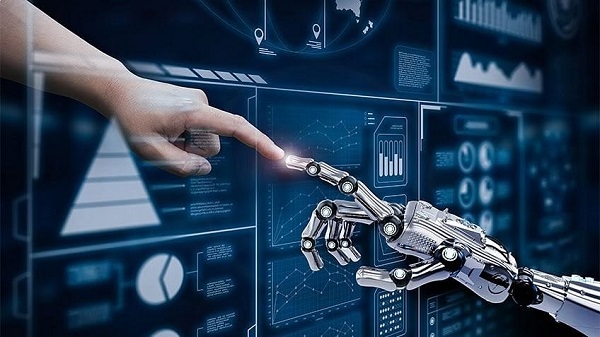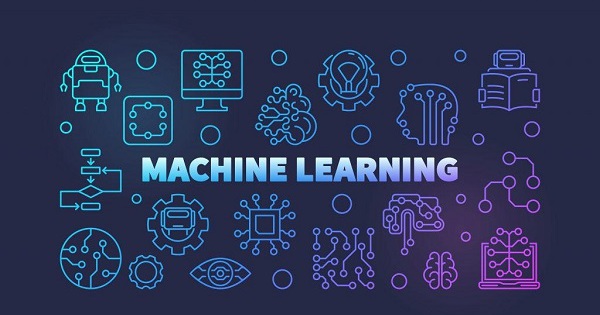What is Machine Learning? This is a question that is becoming familiar in the era of technology 4.0, where artificial intelligence and big data are leading the trend. In this article, let’s learn about the concept of Machine Learning, how AI technology works as well as the application of Machine Learning in practice!
What is Machine Learning?
Machine Learning is a sub-branch of Artificial Intelligence (AI) and is one of the most advanced technologies in the field of computer science today. It allows computers to learn and develop the ability to make decisions without direct human intervention. By using mathematical and statistical algorithms, Machine Learning can analyze, interpret data to predict, react according to previous patterns or behaviors.
Machine Learning is a part of artificial intelligence but it focuses specifically on developing systems that can learn from data and improve over time without being reprogrammed. Meanwhile, artificial intelligence is a broader field that includes not only Machine Learning but also many other techniques such as natural language processing, speech recognition that do not necessarily learn from data.
On the other hand, Deep Learning is a branch of Machine Learning that uses complex neural networks with many layers (called deep neural networks) to analyze data. Deep Learning is especially useful in processing unstructured data such as images, audio, and text. It has the ability to learn from large amounts of unstructured and labeled data efficiently, allowing it to understand more complex relationships that traditional Machine Learning algorithms cannot.
How Machine Learning Works
The Machine Learning workflow consists of a series of steps designed to allow computers to learn from data and make predictions or decisions without direct human intervention. Here are the detailed steps in Machine learning workflow:
Step 1: Data Collection
Data can be collected from many sources, but it is important to ensure the source is authentic to increase the accuracy and efficiency of the machine learning process.
Step 2: Preprocessing
Data preprocessing includes techniques to normalize data such as data cleaning, removing unnecessary values, encoding features, data labeling, etc. This step is very important because raw data often contains many issues that can affect the effectiveness of the Machine Learning model. The time to complete the step depends on the scale of data you have.
Step 3: Training Model
In this phase, Machine Learning algorithms are applied to build models based on the data preprocessed in the above two steps.
Step 4: Evaluating Model
Once the model has been trained, the next step is to evaluate its performance on a test dataset that was never used during training. This will help assess the accuracy and reliability of the model, if the results are satisfactory. over 80% considered good.
Step 5: Improve the model
If the evaluation results are not satisfactory, continue to repeat the training and evaluation steps until the model reaches the desired accuracy. Improving the model may include changing the algorithm, adjusting parameters, or using new data.

Machine Learning Methods
Supervised Learning
Supervised Learning is a method that uses labeled data sets to develop a model that can predict the label of new data based on learned relationships. This algorithm is very popular in applications such as image classification, price prediction,…
Unsupervised Learning
Unsupervised Learning uses algorithms to automatically analyze and group unlabeled data sets. This method has the ability to self-discover and discover hidden patterns or groups of data without human assistance or intervention.
Thanks to its ability to detect similarities and differences in data extremely well, this Machine Learning method is very popular in data analysis. In addition, unsupervised machine learning is also applied in reducing the number of features of the model through dimensionality reduction algorithms such as principal component analysis (PCA), singular value decomposition (SVD), helping to optimize the performance of the model without losing important information.

Types of Machine Learning Algorithms
Machine Learning uses many different types of algorithms, each serving a specific purpose and based on a particular mathematical principle. Here are the six most common types of algorithms:
Neural network
Neural networks are deep learning models inspired by the structure of the human brain, consisting of a series of interacting processing nodes. Neural networks are very effective in pattern recognition, so they are often used in natural language translation, image and speech recognition, and even in image generation.
Linear regression
This algorithm is often used to predict numerical values through linear relationships between variables. A typical example of this application is predicting house prices based on factors such as price history, area characteristics, etc.
Logistic regression
This machine learning algorithm is also a form of linear regression, which is used to predict classification results (yes or no answers). It is commonly used in situations such as spam classification or in manufacturing quality control.
Clustering
Clustering algorithms automatically classify data into groups based on similarities or differences between them, helping data scientists better understand the structure and relationships in the data.
Decision trees
Decision trees are classification and regression algorithms used to predict outcomes based on a series of decisions with a branching structure. The advantages of this algorithm are transparency, easy verification, and easy representation through tree diagrams.
Random forests
Random forests is an algorithm that combines decision trees to increase the accuracy and generalization ability of the model. By combining multiple decision trees, the random forests algorithm will improve the model’s performance in predicting variables or classifying data.

Applications of Machine Learning in Practice
Machine Learning is becoming increasingly popular in many areas of life and technology thanks to its ability to analyze big data and automate decisions effectively. Machine Learning also allows systems to perform repetitive tasks efficiently without human intervention. It also enhances the ability to predict with high accuracy, thereby supporting decision making in many areas such as finance and healthcare.
In particular, Machine Learning also facilitates the personalization of services and products based on user behavior data, improves customer experience and optimizes marketing campaigns. In addition, this algorithm also plays an important role in detecting and preventing fraud, helping organizations minimize risks and increase safety. Thanks to these outstanding capabilities, Machine Learning has been present in many important industries and fields such as:
-
Medical: Machine Learning is used to analyze medical images such as X-rays and MRIs to help detect and diagnose diseases more accurately. For example, Machine Learning models have been trained to recognize early signs of cancer in mammograms, improving early detection and improving cure rates.
-
Finance: In the banking and finance industry, Machine Learning is used to analyze customer credit behavior, predict loan risk, helping banks make smarter support decisions. In addition, fraud detection algorithms also help warn of unusual transactions, preventing fraudulent behavior.
-
E-Commerce and retail: Recommendation systems use Machine Learning to analyze user shopping behavior and recommend relevant products to customers, thereby increasing conversion rates and Sales. For example, Amazon uses Machine Learning to personalize the shopping experience for each user based on their purchase history and the products they have viewed.
-
Traffic and transportation: Machine Learning plays a key role in the development of self-driving cars. These algorithms help cars learn and make complex decisions based on data from sensors and cameras, improving the safety and efficiency of traffic systems.
Summarize
Machine Learning is gradually asserting its indispensable role in the development of many industries. With the ability to automate, predict and personalize services, it not only improves operational efficiency but also brings practical benefits to businesses and life. Hopefully, through the above article, it has helped you better understand “What is machine learning?” as well as how Machine learning workflow works.
Comment Policy: We truly value your comments and appreciate the time you take to share your thoughts and feedback with us.
Note: Comments that are identified as spam or purely promotional will be removed.
To enhance your commenting experience, consider creating a Gravatar account. By adding an avatar and using the same e-mail here, your comments will feature a unique and recognizable avatar, making it easier for other members to identify you.
Please use a valid e-mail address so you can receive notifications when your comments receive replies.
